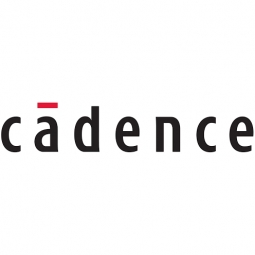Technology Category
- Networks & Connectivity - Bluetooth
- Networks & Connectivity - Low-Power Wide-Area Network
Applicable Industries
- Buildings
- Telecommunications
Applicable Functions
- Product Research & Development
- Quality Assurance
Use Cases
- Leasing Finance Automation
- Material Handling Automation
Services
- Hardware Design & Engineering Services
- System Integration
About The Customer
RivieraWaves is a startup company, founded in 2010, that specializes in wireless connectivity semiconductor intellectual property (IP). The company offers a unique, proven portfolio of Bluetooth® and Wi-Fi™ IP for integration into application-specific integrated circuits (ASICs) and field-programmable gate arrays (FPGAs). RivieraWaves also provides design services ranging from simple IP customization to complete ASIC and application development. The company’s IP portfolio consists of digital hardware, software, and radio frequency (RF) building blocks that enable its customers to develop low-power, low-cost, and innovative solutions that make a significant impact on the market. This makes RivieraWaves an ideal partner for companies that deliver wireless connectivity IC for the mobile, medical, sports and fitness, watch, entertainment, metering, and industrial markets, as well as other wireless sensor-based applications.
The Challenge
RivieraWaves, a startup specializing in wireless connectivity semiconductor intellectual property (IP), faced a significant challenge in producing highly differentiated low-power Bluetooth 4.1 IP within aggressive timeframes. The company had been using Open Verification Methodology (OVM) for its Bluetooth 4.0 designs. However, due to a competitive need to increase automation and produce low-power products in shorter time-to-market windows, RivieraWaves decided to migrate to Universal Verification Methodology (UVM) for its next-generation Bluetooth 4.1 IP designs. The company needed a verification environment and solution that would keep pace with this migration and enable faster IP verification and integration into Bluetooth devices than previously possible. The challenge also included finding bugs faster and sooner, effectively managing new, complex IP challenges, and meeting robustness goals while achieving new levels of efficiency.
The Solution
RivieraWaves chose to use Cadence's Incisive verification technologies for its next-generation Bluetooth 4.1 verification requirements, having already used them for its Bluetooth 4.0 IP designs. The Incisive Enterprise Simulator enabled testbench automation, reuse, and analysis to verify designs from the system level, through register-transfer level (RTL), and to the gate level. It supported the metric-driven approach implemented by Enterprise Manager, and its native-compiled architecture sped up the simultaneous simulation of transaction-level, behavioral, low-power, RTL, and gate-level models. Incisive Enterprise Manager accelerated RivieraWaves’ verification plan execution by automating time-consuming manual tasks at the block, chip, system, and project levels. With SystemVerilog and e functional coverage capabilities, Enterprise Manager drove an advanced coverage-based verification and debug methodology so that RivieraWaves could reach verification closure quickly.
Operational Impact
Quantitative Benefit

Case Study missing?
Start adding your own!
Register with your work email and create a new case study profile for your business.
Related Case Studies.

Case Study
Energy Saving & Power Monitoring System
Recently a university in Taiwan was experiencing dramatic power usage increases due to its growing number of campus buildings and students. Aiming to analyze their power consumption and increase their power efficiency across 52 buildings, the university wanted to build a power management system utilizing web-based hardware and software. With these goals in mind, they contacted Advantech to help them develop their system and provide them with the means to save energy in the years to come.

Case Study
Intelligent Building Automation System and Energy Saving Solution
One of the most difficult problems facing the world is conserving energy in buildings. However, it is not easy to have a cost-effective solution to reduce energy usage in a building. One solution for saving energy is to implement an intelligent building automation system (BAS) which can be controlled according to its schedule. In Indonesia a large university with a five floor building and 22 classrooms wanted to save the amount of energy being used.

Case Study
Powering Smart Home Automation solutions with IoT for Energy conservation
Many industry leaders that offer Smart Energy Management products & solutions face challenges including:How to build a scalable platform that can automatically scale-up to on-board ‘n’ number of Smart home devicesData security, solution availability, and reliability are the other critical factors to deal withHow to create a robust common IoT platform that handles any kind of smart devicesHow to enable data management capabilities that would help in intelligent decision-making

Case Study
Protecting a Stadium from Hazardous Materials Using IoT2cell's Mobility Platform
There was a need for higher security at the AT&T Stadium during the NFL draft. There was a need to ensure that nuclear radiation material was not smuggled inside the stadium. Hazmat materials could often be missed in a standard checkpoint when gaining entry into a stadium.









